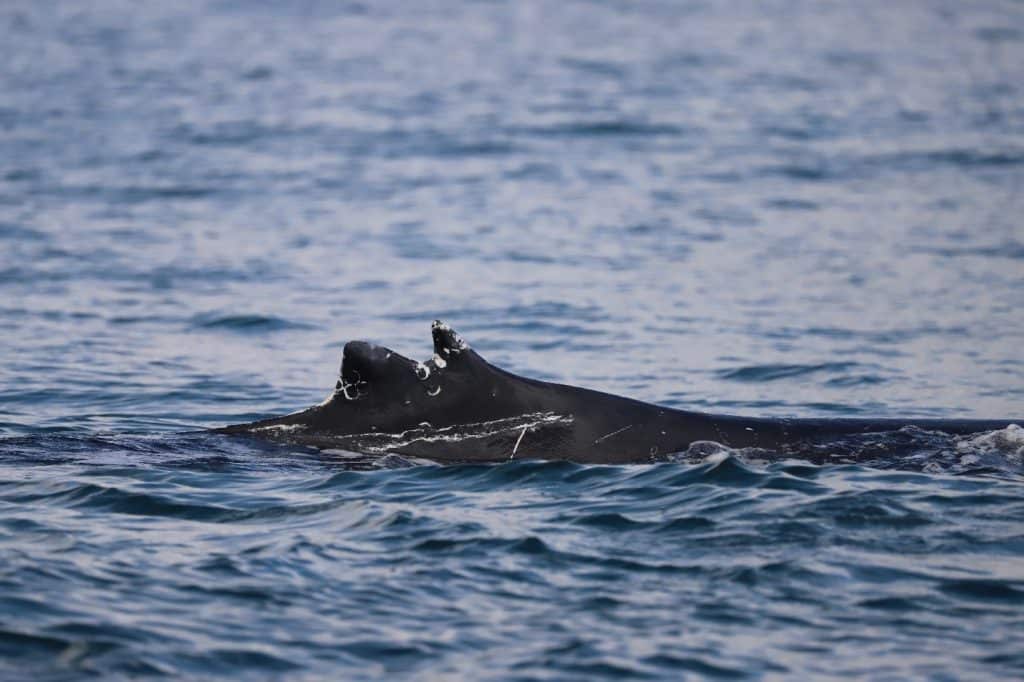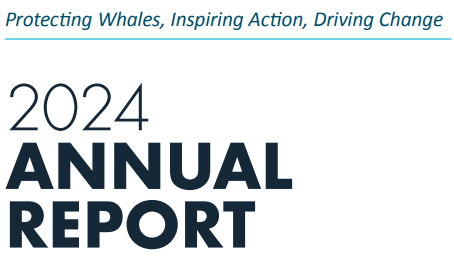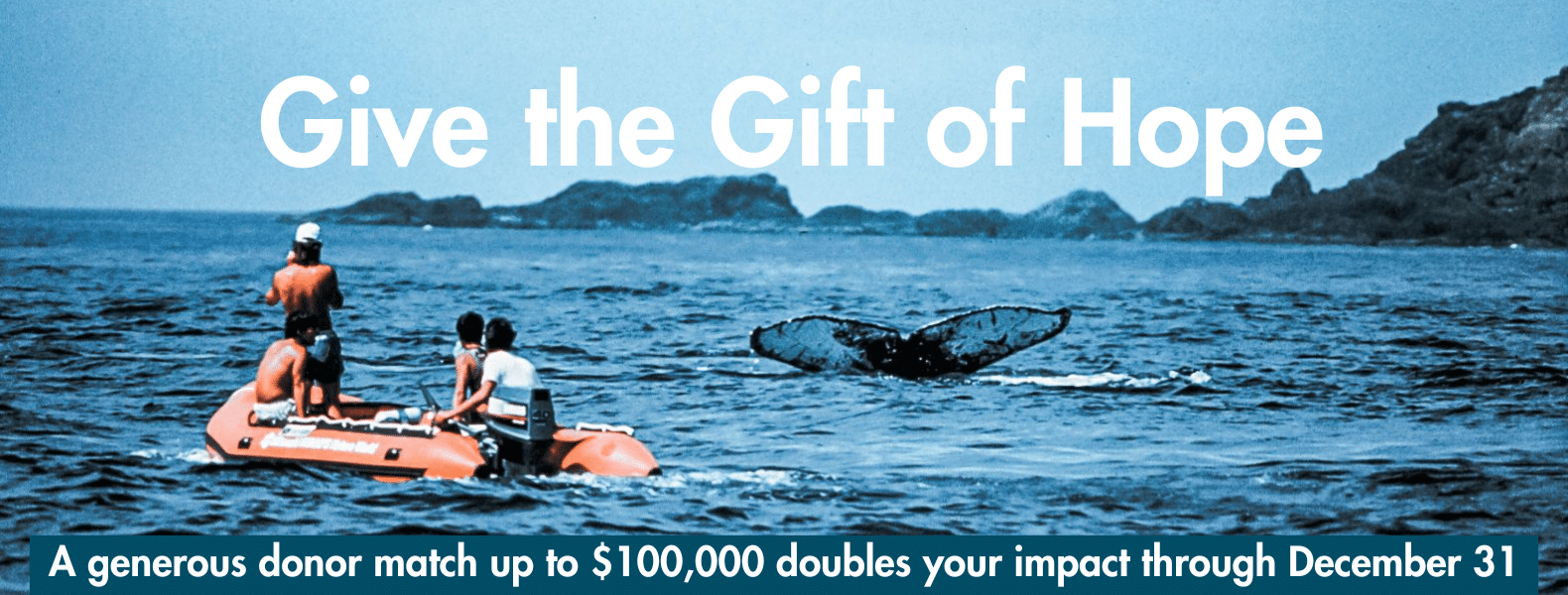Hervey Bay’s Most Famous Whale, “Nala” Makes an Appearance!
September 7, 2025
Nala is back in Hervey Bay! Exciting news from our team in Australia – Nala, Hervey Bay’s most famous whale made an appearance in the bay this week with her new calf in tow. Our research team managed to collect some photos and drone images to allow us to assess both her and her calf’s body condition. PWF first photographed Nala in 1988 in Hervey Bay and since then she has been seen with 15 calves! She’s famous for a behaviour called ‘fluke up feeding’ where she nurses her calf while sticking her huge tail flukes out of the water. Many thanks to our friends at Blue Dolphin Marine Tours and Dr Wally Franklin from The Oceania Project for giving our team the heads up about her whereabouts.
Research activities conducted under appropriate state and federal permits and following animal ethics approval. Drone pilots carry a CASA remote pilots license.
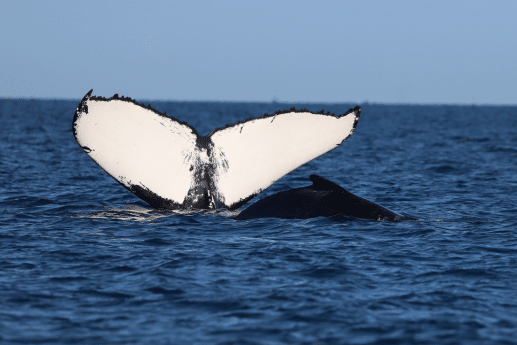
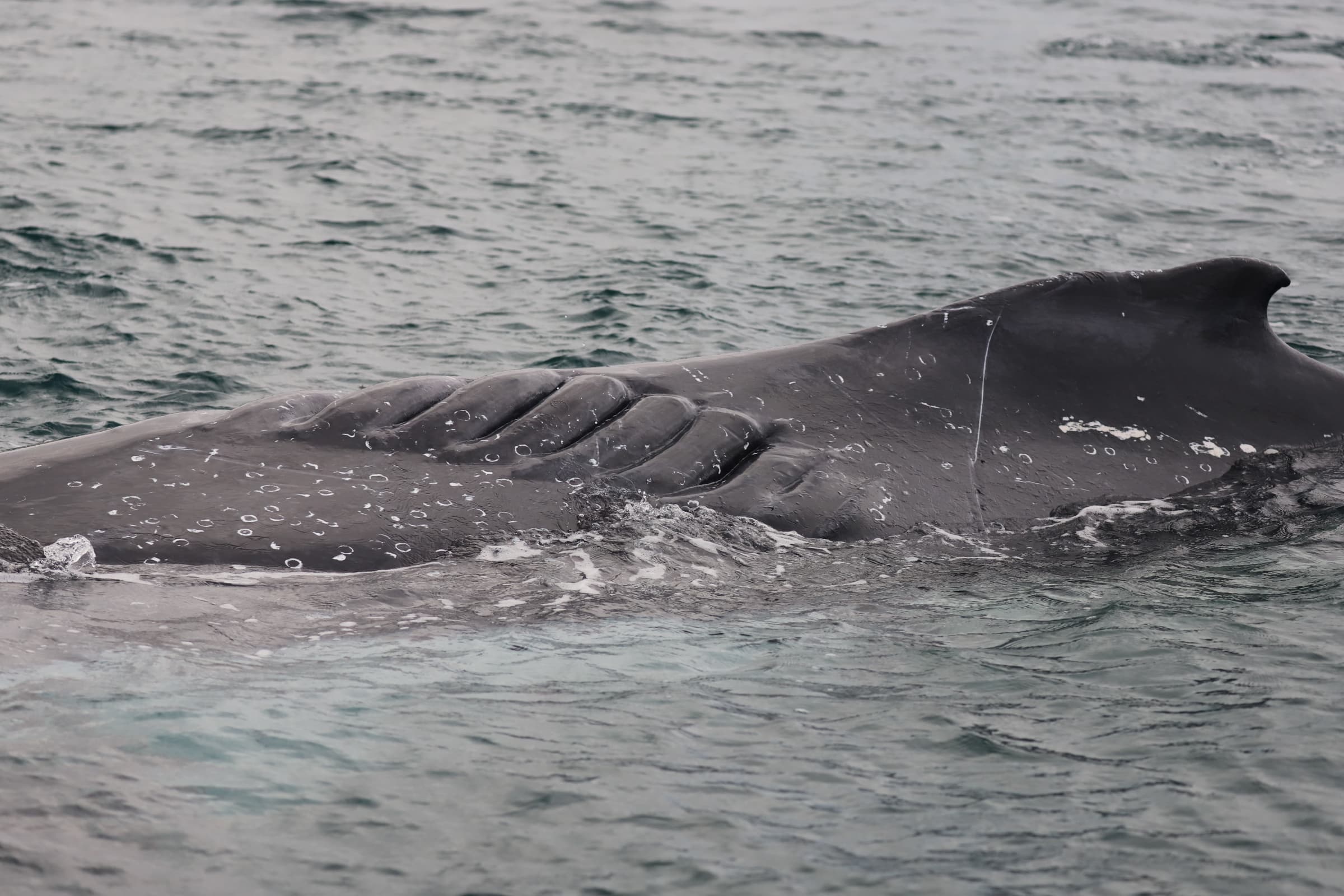
Go Slow, Whales Below!
August, 17, 2025
Our research team in Australia recently had a distressing encounter with a humpback whale that had some huge scars across its back from a vessel propeller. Thankfully, the scars appeared to be well healed, but a stark reminder of the threats that whales and dolphins face in the ocean. Pacific Whale Foundation’s work on whale-vessel collisions has led to best-practice guidelines in several of the regions where we operate. Research activities conducted under appropriate state and federal permits and following animal ethics approval. Drone pilots carry a CASA remote pilots license.
Hawaiian Island False Killer Whales are declining, new study reveals.
August 15, 2025
New paper led by NOAA and conducted in collaboration with Pacific Whale Foundation, Cascadia Research Collective, Oregon State University, and Wild Dolphin Foundation reveals alarming news: only ~139 endangered main Hawaiian Islands false killer whales remain. This population has been in long-term decline, and since being listed as endangered in 2012, the rate of decline has more than tripled to 3.5% per year. At current rates, these whales face a high risk of functional extinction within decades. Understanding the drivers behind this decline is critical to guiding effective conservation action and is the current focus of the Hawai’i research team. You can read more on this here and here.
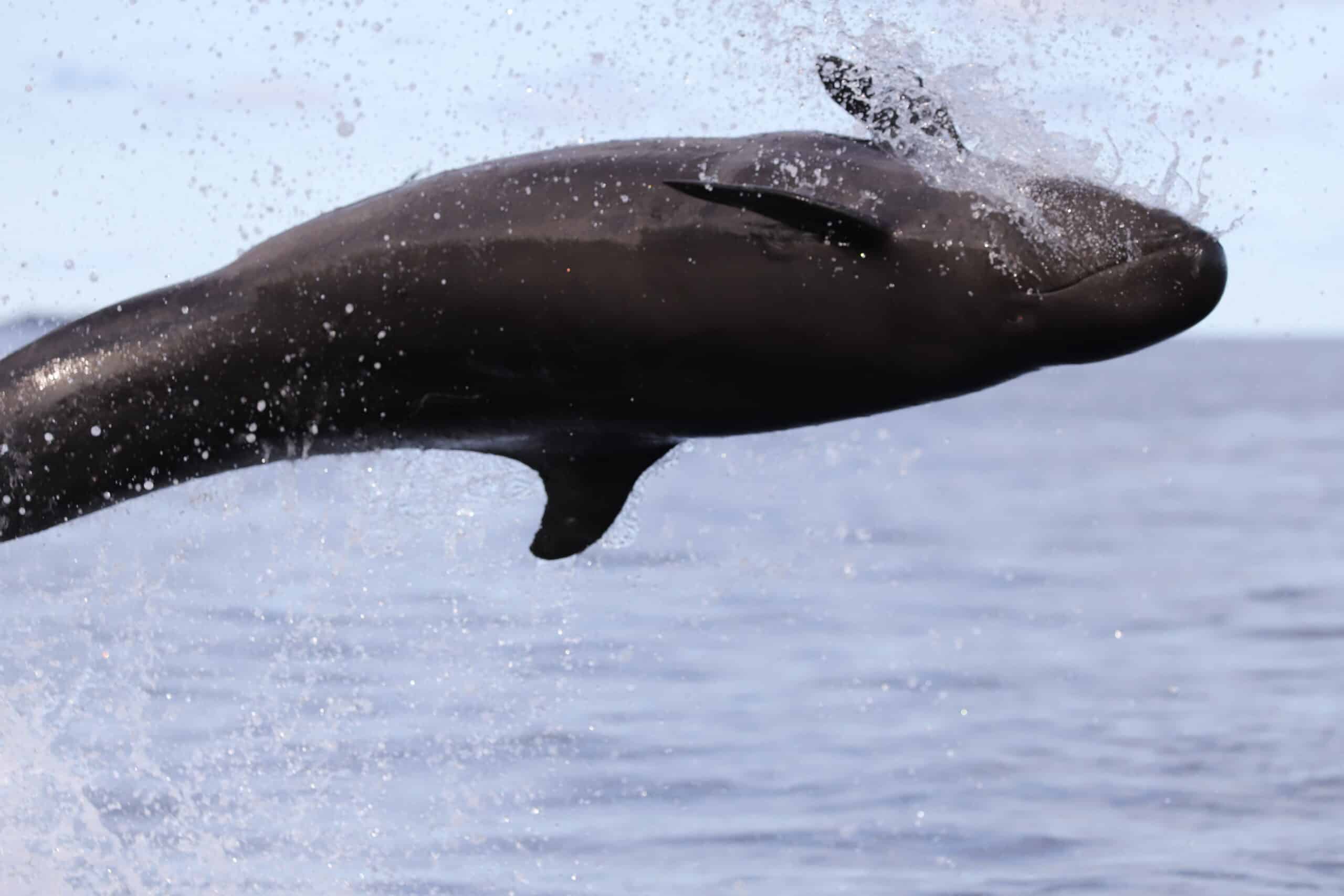
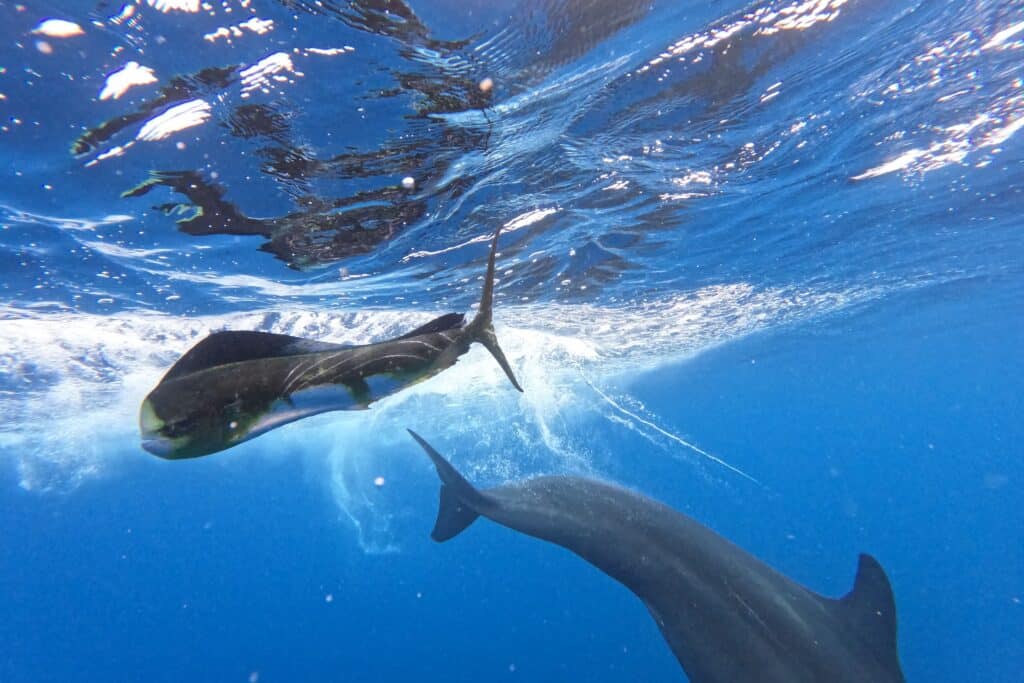


Successful Whale Entanglement Rescue!
August 9, 2025
The Ecuador research team had the opportunity of assisting in a (successful!) entanglement response. In the morning, a whale watching operator alerted them of an entangled humpback whale close to Salango Island. They notified the Machalilla National Park immediately, activating the entanglement response protocol. The team supported the Park with our equipment, as well as participating actively in the response.
In just over an hour, they were at the site, where they found the whale completely covered in gillnet, visibly exhausted, and very close to the shore, with the net possibly caught on the rocks. Despite the location (wave exposed area) conditions were favorable, and thanks to the whale’s lethargic behaviour, they were able to free it within a couple hours. As soon as it was released, the whale quickly swam off. The net was recovered, weighing roughly between 180-200 kg (wet weight) according to the park guards.
Southern Right Whale Sighting!
August 7, 2025
Our research team in Australia had an exciting encounter yesterday with a Southern right whale. Listed as Endangered in Australia, there are thought to be fewer than 300 on the East Coast of Australia. Hervey Bay is at the northern limit of their range, and there hasn’t been one spotted in the bay in over 5 years, making this a very important record. The team collected drone images to assess the whale’s body condition and photographs to help identify the individual. Research activities conducted under appropriate state and federal permits and following animal ethics approval. Drone pilots carry a CASA remote pilots license.
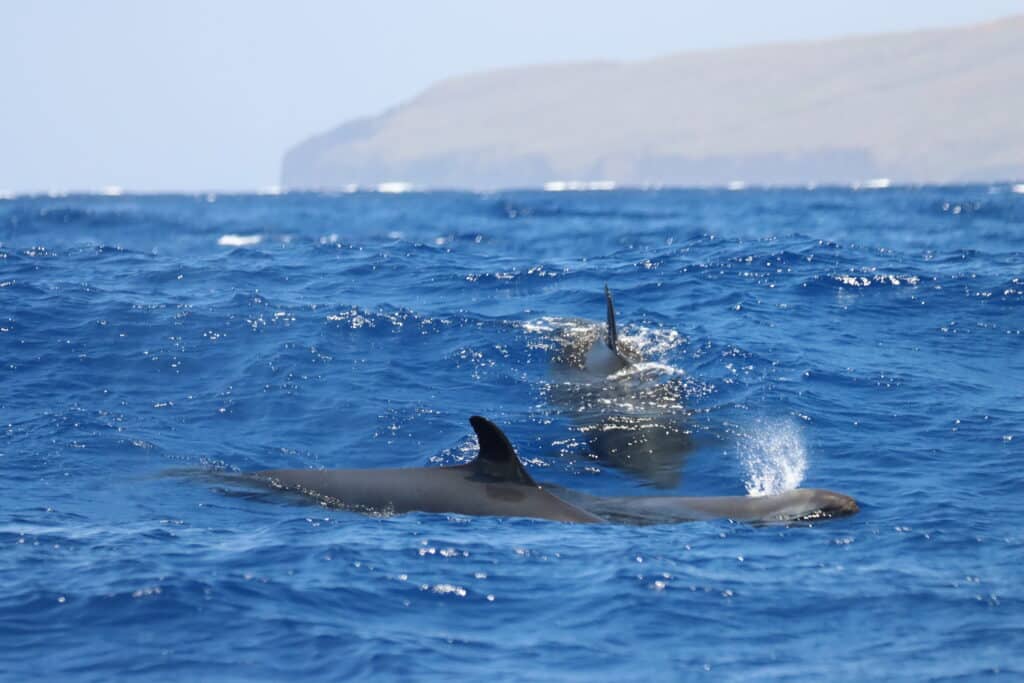
PWF Hawaiʻi Team has Rare Encounter with Endangered False Killer Whales!
July 23, 2025
The PWF Research Team had an exciting field day off Maui after satellite tag data (from our partners at Cascadia Research Collective) showed false killer whales nearby. In 7-foot swells, we first spotted them when one leapt high above the waves. Their clustered locations suggested feeding – confirmed when one surfaced with a fish in its mouth! With winds too strong for drone flights, we focused on photo-ID and documented a female we’ve tracked since 2014 – now with a collapsed dorsal fin, likely from fisheries interaction. A sobering reminder: fewer than 150 of these island-associated whales remain. PWF, in collaboration with the Marine Mammal Research Program of Hawaiʻi, is studying their bioenergetics using drones, photo-ID, and bio-logging tags to understand their health and threats like fisheries bycatch. Every encounter brings vital insights – and hope – for the long-term recovery of this incredible species. Research activities authorized under NMFS/MMPA ESA permit #27099.
PWF Ecuador Team Spots Rare Humpback Whale
June 27, 2025
Last week, our Ecuador research team had an unforgettable encounter – a completely white humpback whale was spotted off Isla de La Plata! Based on the photos and markings, we’ve confirmed that this individual is Suru, a whale first seen as a calf in Costa Rica in 2022, later in Peru in 2023, and most recently in Antarctica. This is the first confirmed sighting of Suru in Ecuadorian waters. We’ll continue monitoring the area and hope Suru stays around a bit longer, as every sighting is a chance to learn more about this rare whale.
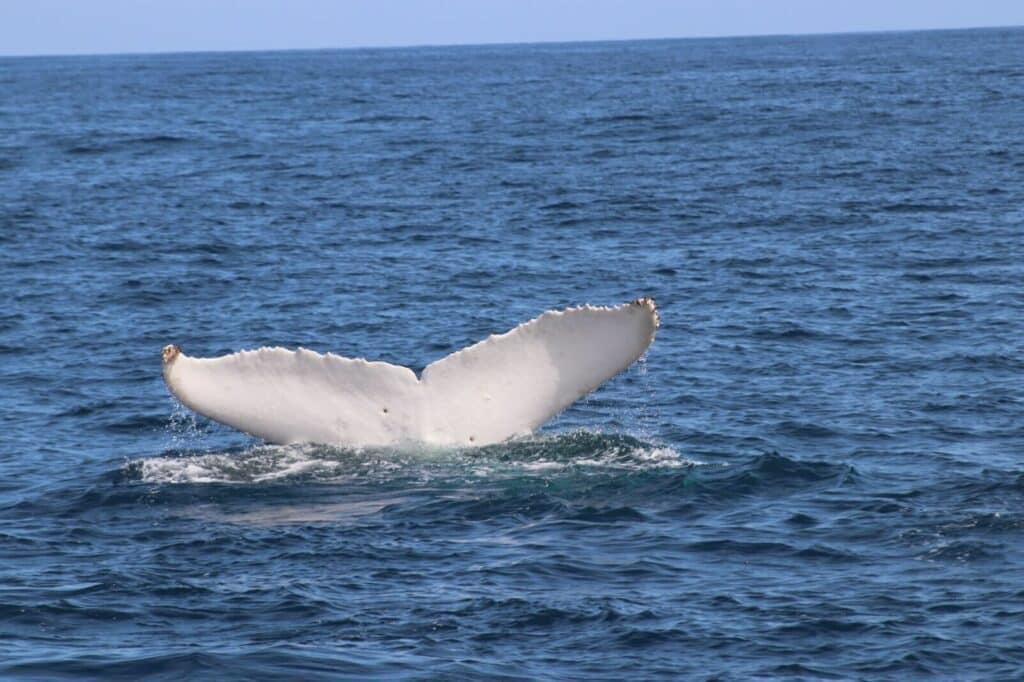
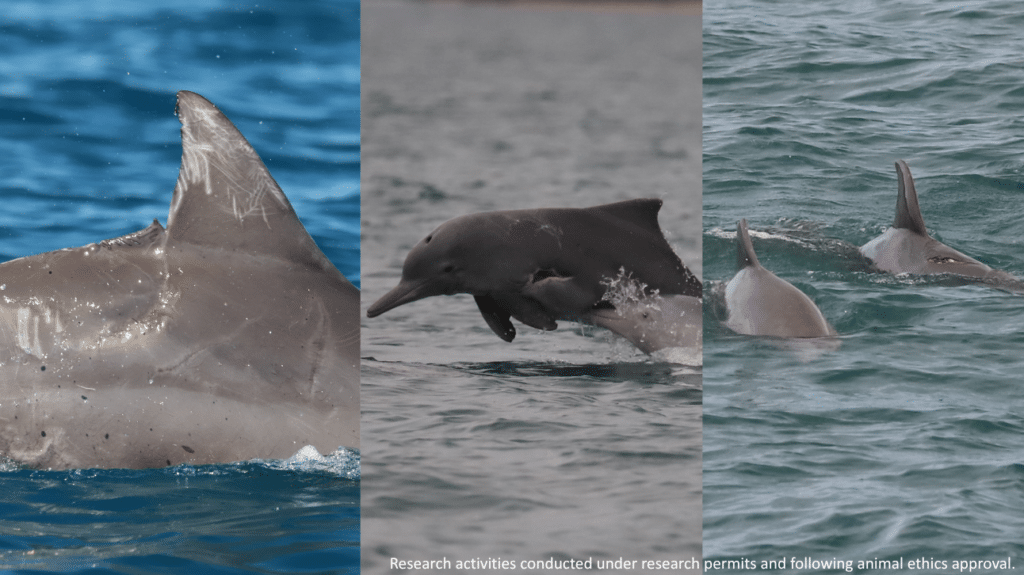
PWF Australia Researchers use Shark Bites on Dolphins to Better Understand Predation Pressure Influences
June 24, 2025
Shark attack on a dolphin! Dolphins are known for being top predators in the ocean, but they’re also predated upon by bigger species including large sharks. In Australia, the research team often see fresh or healed shark bite wounds on dolphins from a failed predation attempt. Why are we interested in shark bites on dolphins? Documenting shark bites can tell us about the relative predation risk for dolphins in an area or season. This allows us to better understand how predation pressure influences the behavior and distribution of dolphin populations. Research activities conducted under appropriate state and federal permits and following animal ethics approval.
Researchers in Australia observe rare social behavior in 11 Australian humpback dolphins
June 19, 2025
Social Behavior! Our research team in Australia had an exciting encounter with a group of Australian humpback dolphins on Tuesday. The 11 dolphins, which included two very young calves, were socializing in the shallows and the team documented them breaching, tail slapping and chasing each other for over an hour! Humpback dolphins are typically quite shy and can be hard to spot so it was a real privilege to see them so active at the surface. The team also collected photos for individual identification and drone images to assess their body condition. These images will contribute to our 2025 project aimed at estimating the abundance of the at-risk Australian humpback dolphins in Hervey Bay, assessing their threats and contributing to their conservation management. Research activities conducted under appropriate state and federal permits and following animal ethics approval. Drone pilots carry a CASA remote pilots license.
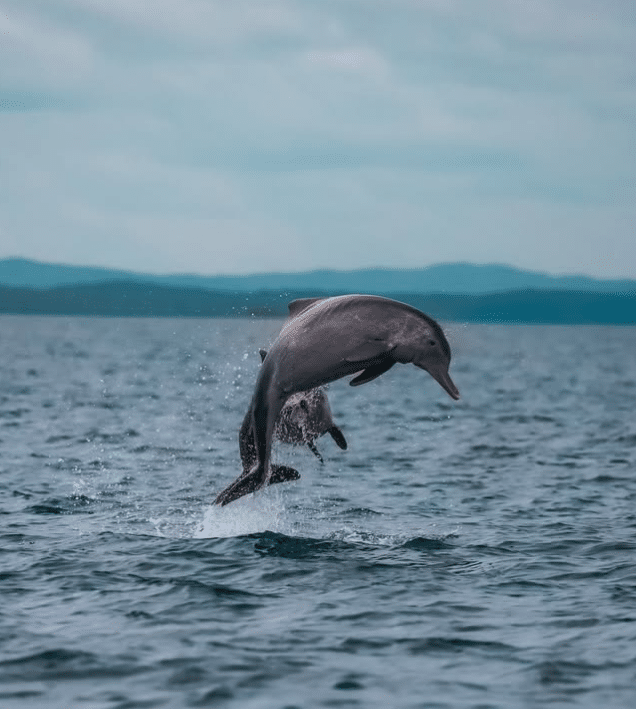
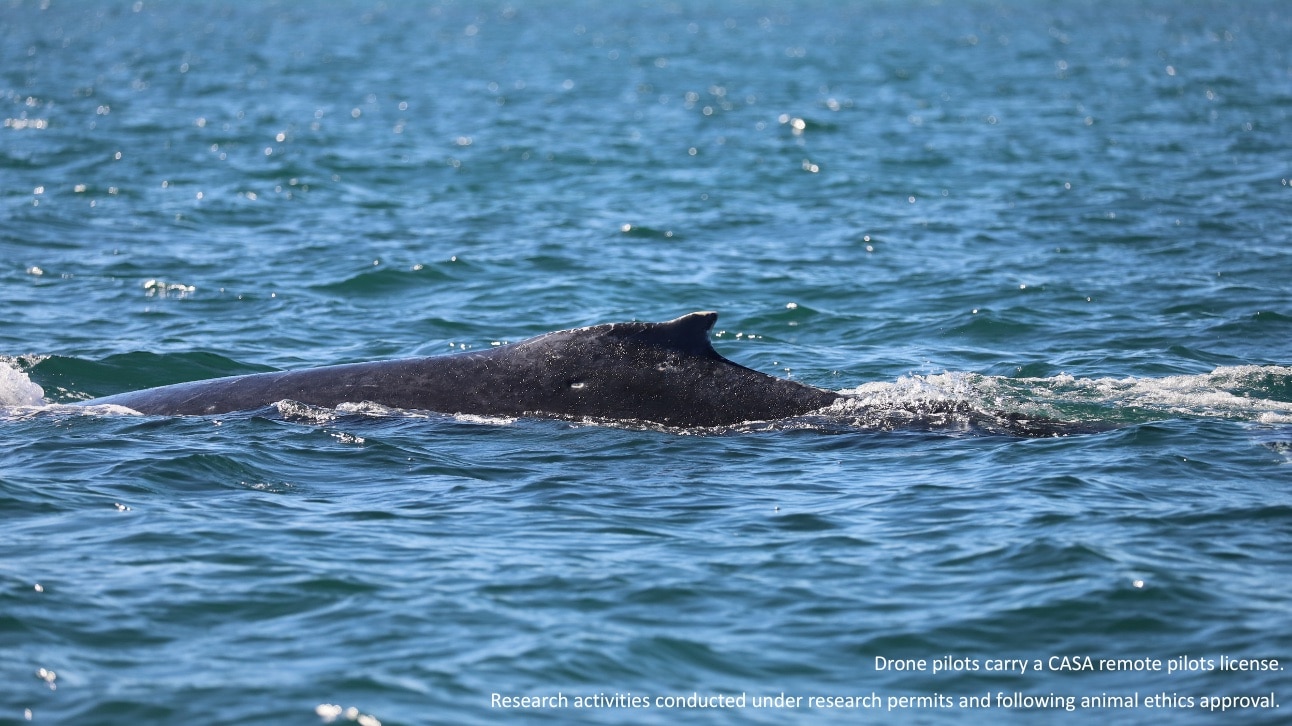
PWF Australia Spots First Humpback Whale of 2025 Season!
June 16, 2025
Our first Australian humpback whale sighting of 2025! Exciting news from our research team in Australia, they encountered their first humpback whale of the 2025 season on Sunday. The juvenile whale was spotted just south of Round Island in very shallow waters, about 3 meters! The team managed to collect dorsal fin photos and drone images to measure the whale’s body condition. Hopefully this means we’re in for a great whale season. Research activities conducted under appropriate state and federal permits and following animal ethics approval. Drone pilots carry a CASA remote pilots license. Hawai’i version: Our first Australian humpback whale sighting of 2025! Exciting news from our research team in Australia, they encountered their first humpback whale of the 2025 season on Sunday. The subadult was spotted in shallow waters, about 3 meters, so no chance for fluke identification. The team managed to collect dorsal fin photos and drone images to measure the whale’s body condition. Research activities conducted under appropriate state and federal permits and following animal ethics approval. Drone pilots carry a CASA remote pilots license.
ABC Radio Big Ideas Interview: Animal Adventures
May 6, 2025
Our Australian Research Associate, Dr Barry McGovern, recently spoke on ABC’s “Conversations” about his career and some of the research PWF are carrying out in Australia. Barry has had a range of research roles that have taken him all over the world and it’s always interesting to hear about the different career paths people take. Check out the interview here:


Successful False Killer Whale CATs Suction-Cup Tag Deploymet
April 24, 2025
The Hawaiʻi Research Team took advantage of a break in the trade winds to conduct surveys off the southwest coast of Moloka’i. They encountered false killer whales (Pseudorca crassidens) traveling toward Oʻahu and collected drone and photo-identification data. A CATS suction-cup tag was successfully deployed on one individual in the channel, contributing to research on the energetic needs of false killer whales in Hawaiian waters.
“Escort” Whale Spotted Chasing Mother/Calf Humpback Whales
April 6, 2025
While assessing the health of humpback whales in Hervey Bay, Australia, last year, our Research team captured this incredible footage of a mother and calf being approached by an ‘escort’ whale. In the breeding grounds, escorts are often males trying to breed with the female. While escorts in Hervey Bay are likely to be males, they are typically quite docile and just follow the mom and calf without much interaction.
In this clip, however, you can see the escort makes an aggressive approach, swimming at speed and blowing bubbles. The mother’s protective instincts kick in, and she chases the much smaller escort away. Escorts can inadvertently injure calves by ignoring them in their pursuit of the mother, and this mother wasn’t taking any chances.
Notice how she uses her enormous pectoral fin to help maneuver and keep her body between the escort and the calf! As we approach Australia’s whale season in May, we are excited to witness more interactions like this!
Research activities conducted under appropriate state and federal permits and following animal ethics approval. Drone pilots carry a CASA remote pilots license.

Chilean Blue Whale Alfaguara Project Update
March 27, 2025
The Alfaguara (blue whale) Project Isla de Chiloé is the most important feeding ground for Chilean blue whales and has one of the highest sighting rates in the Southern Hemisphere. This year’s 22nd field season has been unusual, with few blue whale sightings in January and February but an abundance of Peale’s and ç dolphins. By late February, whale spouts from shore signaled the arrival of blue, humpback, and fin whales. Our team will continue collecting data through March, concluding the 2025 field season. In collaboration with Centro de Conservación Cetacea, this project is part of a long-term photo-identification effort for blue whales. Unlike humpbacks, blue whales can be identified by pigmentation patterns on both sides. Through the Alfaguara Project, we have identified over 600 individuals, providing insights into migration patterns from Isla de Chiloé to the Eastern Tropical Pacific. Our data also contribute to abundance estimates critical for monitoring population trends. Alarmingly, evidence suggests a ~35% population decline over the past 14 years, raising serious conservation concerns. We are working to identify the causes of this decline to inform conservation efforts. Research activities conducted under appropriate state and federal permits and following animal ethics approval.Multi-MC (Mother-Calf) Groups Paper
March 19, 2025
We are pleased to announce a new publication from East Australia where we describe humpback whale mom-calf pairs forming groups with other mom-calf pairs, termed ‘multi-MC groups’. Mom-calf pairs are typically one of the least social groups found in a population, but we found that as the calf grows older, the prevalence of multi-MC groups increased. There were significantly more social behaviors recorded in multi-MC groups compared to single-calf groups. It is likely that migrating mothers are taking the opportunity to socialize their calves as they get older. This social development along the migration route may play a crucial role in calf survival and may contribute to the high growth rate of 11% observed in the East Australia population.
A special appreciation to the Research team, and Dr. Barry McGovern for their parts in this research.
Research activities conducted under appropriate state and federal permits and following animal ethics approval. The UAS pilot holds CASA remote pilot license


PWF Ecuador Research Field Survey
March 2, 2025
Our Ecuador research team led by Dr. Cristina Castro recently surveyed 487 km in search of blue whales and other cetaceans. The team collected data on 4 species including Bryde’s whales, short-finned pilot whales, pan-tropical spotted dolphins, and common bottlenose dolphins. While the team was disappointed not to have detected either blue whales or common dolphins, they were especially thrilled to detect a group of more than 100 short-finned pilot whales, the largest group our team in Ecuador has ever documented. Data collection included skin samples, photo-identification, as well as aerial imagery and underwater images. The team was also excited to detect a Bryde’s whale mother that they had seen in May 2024.
ABC Radio Big Ideas Interview
February 23, 2025
Recently Barry McGovern, our Research Associate in Australia, spoke at a panel discussion as part of ABC Radio National’s Big Ideas. The show was part of the 2024 Phillip Island Whale Festival where Barry presented on some of PWF’s research in Australia. Dr Pete Gill from the Blue Whale Study (https://bluewhalestudy.org/) was also on the panel and the pair talked about their lives in cetacean research and some of their ongoing projects. Listen to the episode online here:

Male Humpback Whale Songs: Communication and Competition, Not Just Mating Displays
June 12, 2024
As you may know, only male humpback whales sing. Those songs have often been thought to be mating display, similar to bird song, but did you know that this idea has been consistently debunked? Studies have shown that when scientists played humpback song to breeding females in the area which interestingly resulted in males approaching the source of the played song, sending researchers back to the drawing board.
It is more likely that males are singing to communicate with other males. A popular theory surrounding this idea is that the males might use songs to coordinate their behavior. This could invite competition from other males, or those other males might be looking for partners in an alliance. Alliances between male humpback whales have been observed in competitive groups and might help males displace other competitors!


PWF Hawaiʻi Research Humpback Whale and Dolphin Surveys
February 15, 2025
During the first 15 days of the month, our Hawai‘i research team was on the water for five days surveying leeward Maui Nui for spinner dolphins and humpback whales. We covered 219.1 nautical miles, recorded over 30 whale encounters, and gathered data on humpback whales as well as bottlenose and spotted dolphins. We were also able to document an entangled mother-calf whale, that was partially freed of gear early this month.
Hawaiʻi Research Captures Whale Song
January 27, 2025
During a recent vessel survey with the University of Hawai’i Marine Mammal Research Program, our team captured this awe-inspiring underwater video of a humpback whale singing in Hawai’i. The song was so powerful, researchers could feel the vibrations through their feet!
As you watch, keep an eye out-you’ll catch a brief glimpse of this incredible whale about two-thirds of the way through the video. Since only male humpbacks sing, we know this soulful performer is a male. What’s truly fascinating? Humpback whale songs evolve over time, spreading through cultural exchange as whale populations interact. Parts of their songs can travel vast distances across oceans, revealing just how connected these magnificent animals are on a global scale.
For over 40 years, we’ve dedicated ourselves to studying and protecting humpback whales and other marine life. Follow along to learn more about our research and conservation efforts and help us continue this important work!
Research activities authorized under NMFS/MMPA ESA permit #27099 and conducted following animal ethics approval.
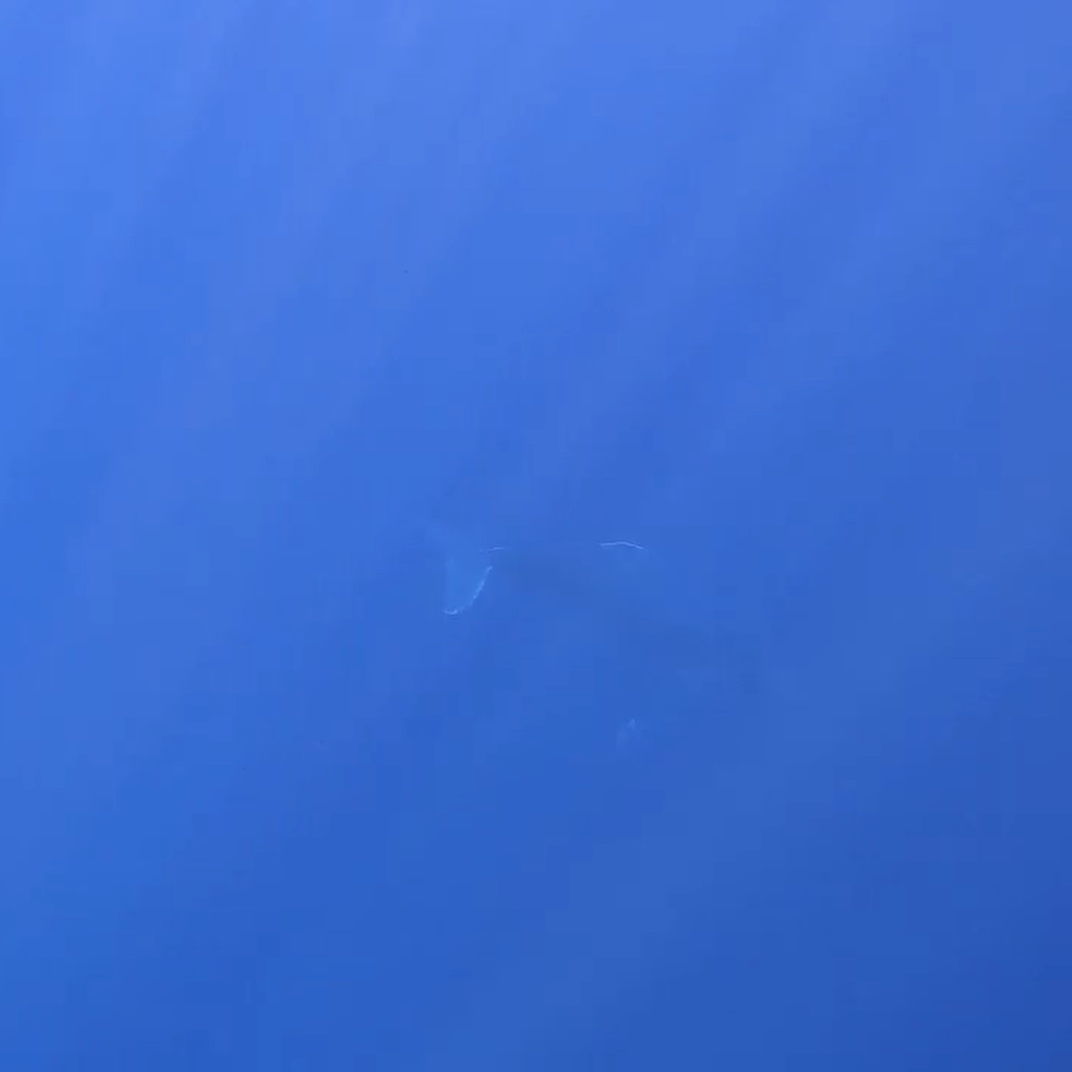
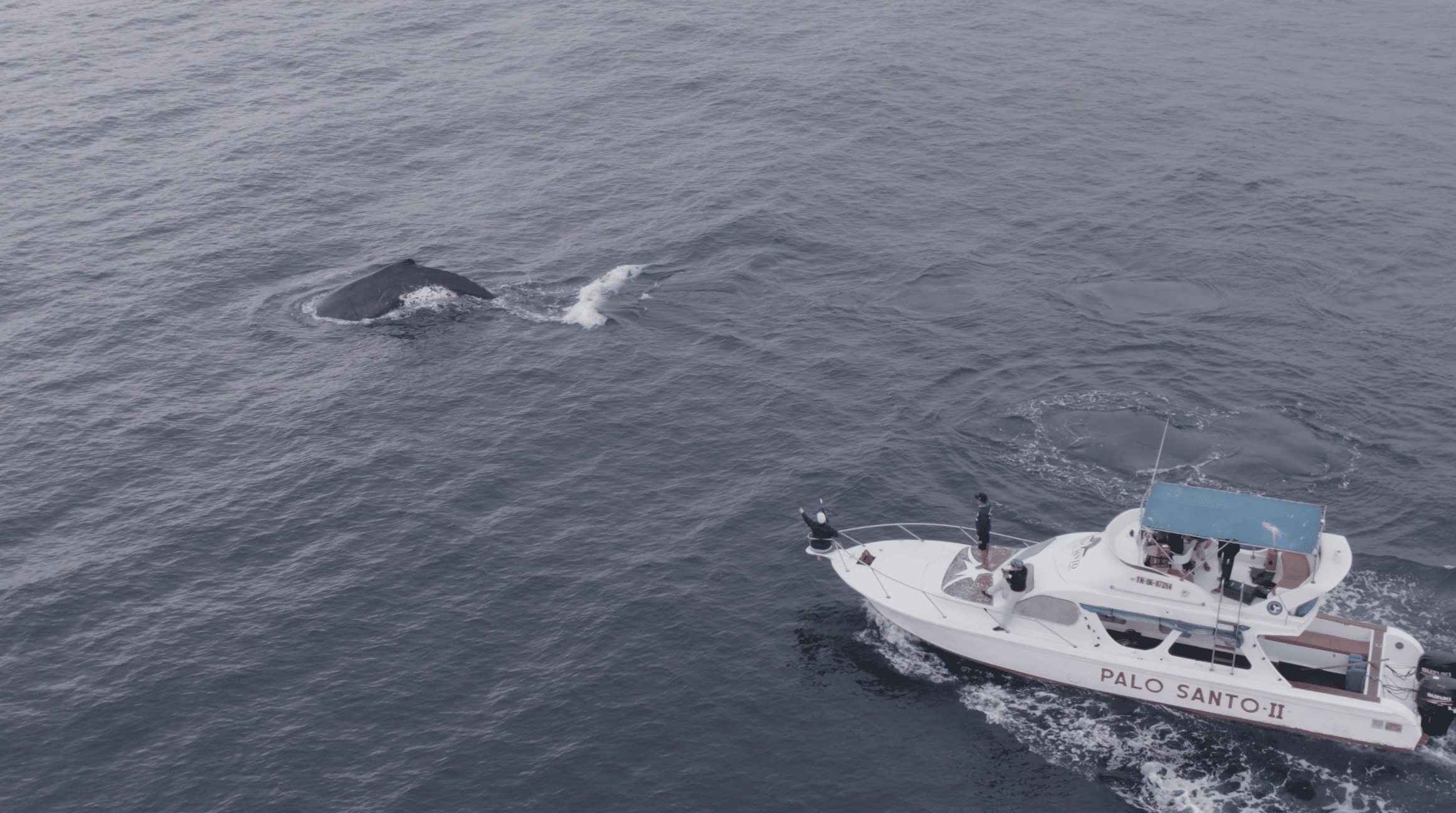
Southern Ocean Persistent Organic Pollutants Program Update
January 22, 2025
This year, our research team in Ecuador made a significant contribution to the Southern Ocean Persistent Organic Pollutants (POPs) Program by collecting 40 skin and blubber samples from humpback whales. Led by the Environmental Futures Research Institute at Griffith University, this program investigates how POPs are transported to Polar regions, their behavior within high-latitude ecosystems, and their impact on marine life in changing environments.
Humpback whales, which migrate annually between Antarctic feeding grounds and tropical breeding areas, are key to this research. To ensure a comprehensive understanding, samples were gathered from adults and calves in Machalilla National Park, Ecuador, and from breeding regions across the Southern Hemisphere, including Brazil, Madagascar, South Africa, Australia, and Polynesia.
This collaborative effort is vital in uncovering the effects of contaminants on humpback whales and the ecosystems they depend on. Together, we’re deepening our understanding of marine health and the need for global conservation efforts.
Research activities conducted under permits from Machalilla National Park.
Coastal Bottlenose Dolphin Interaction
January 16, 2025
Exciting news from our Ecuador research team! In collaboration with the Museum of Whales and WildAid, we documented a groundbreaking sighting: a coastal bottlenose dolphin interacting with oceanic bottlenose dolphins near Isla de la Plata, Ecuador-an incredible 100 km beyond its usual coastal range!
This rare event sheds light on dolphin social behavior and highlights the vulnerability of oceanic dolphins to coastal impacts. The coastal dolphin showed signs of lobomycosis, a disease tied to coastal pollution, sparking concerns about how such risks could affect healthier oceanic populations.
This discovery is a powerful reminder of the interconnectedness of marine ecosystems and the urgent need to protect all marine habitats. Check out the paper here.
Research activities conducted under permits from Machalilla National Park.
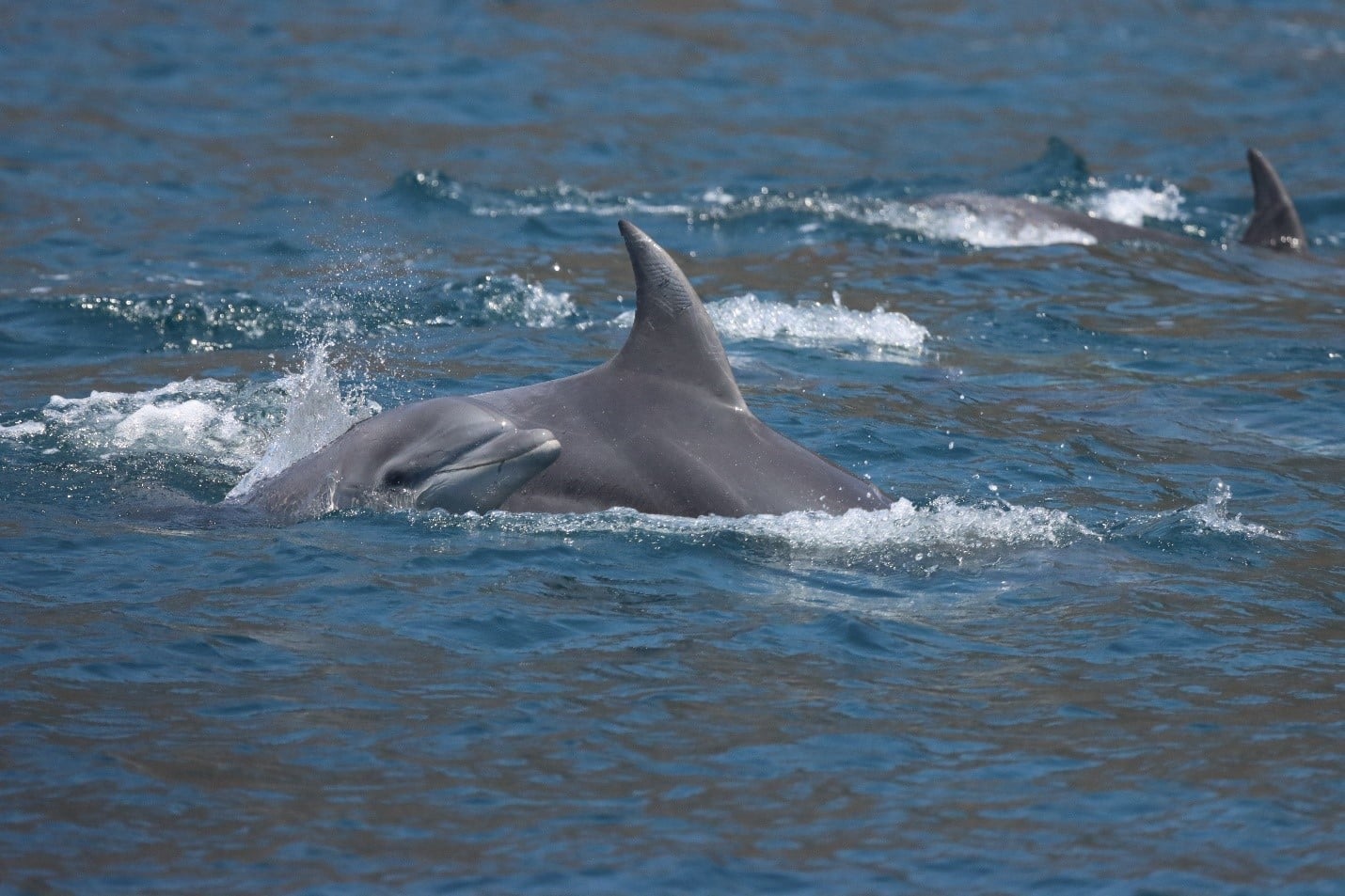
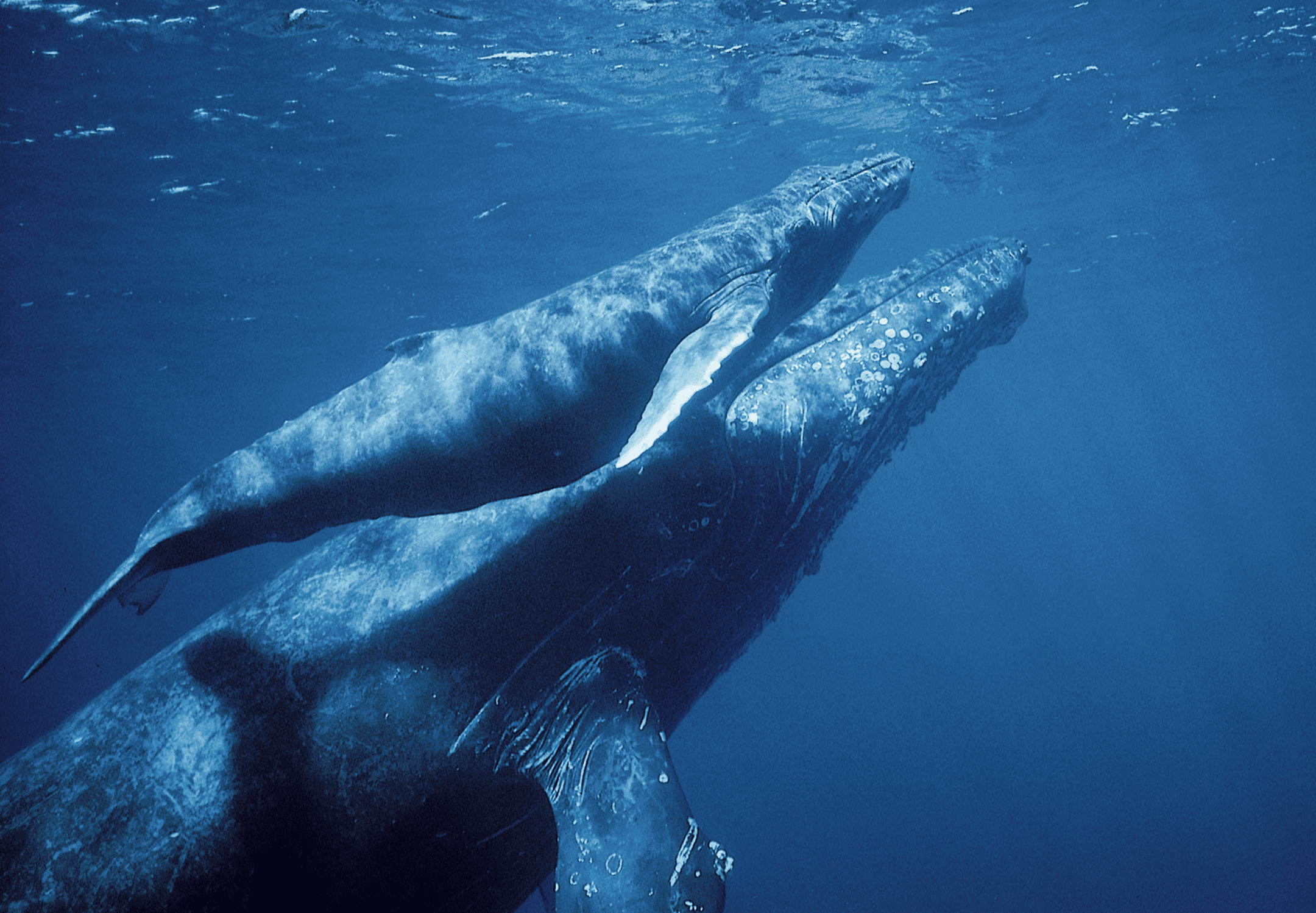
Three New Studies Published!
December 12, 2024
We’re excited to announce the publication of three new collaborative research studies in the last month, showcasing the vital role of partnerships in advancing marine science. These publications highlight Pacific Whale Foundation’s commitment to sharing knowledge and working alongside other researchers to better understand and protect whales and dolphins. From innovative findings to impactful conservation strategies, these collaborations reflect our dedication to science-based stewardship. Visit https://bit.ly/3W7rTIn to see our publications.
PWF Hawaii Team Completes Whale Entanglement Response Training
December 05, 2024
Round of applause for Research! 👏 Our Hawaiʻi team recently completed NOAA’s Whale Entanglement Response Training with the Hawaiian Islands Humpback Whale National Marine Sanctuary aboard our research vessel, Kaiao. For some team members, this was a valuable refresher, while others gained new skills under the guidance of Sanctuary staff.
The training covered essential techniques, including throwing grapple hooks to secure lines for attaching telemetry buoys to gear trailing behind entangled whales, as well as methods for safely approaching these whales. Additionally, our Chief Scientist, Jens, received specialized training on techniques from NOAA’s inflatable boat, which included adjusting distances on the working line for cutting away trailing gear.
Pacific Whale Foundation has been actively involved in whale entanglement response efforts since 2015, and we look forward to this annual training each year. With humpback whales already appearing in Maui Nui, we’re prepared to make a positive impact!
If members of the on-water community should come across an entangled whale in Hawai‘i, do not try to help the animal yourself, but instead be a first responder and call in the report to NOAAʻs regional hotline at (888) 256-9840.
The Hawaiian Islands Humpback Whale National Marine Sanctuary leads large whale entanglement response efforts in Hawaiʻi under NOAA’s Marine Mammal Health and Stranding Response Program (Permit No. 24359).
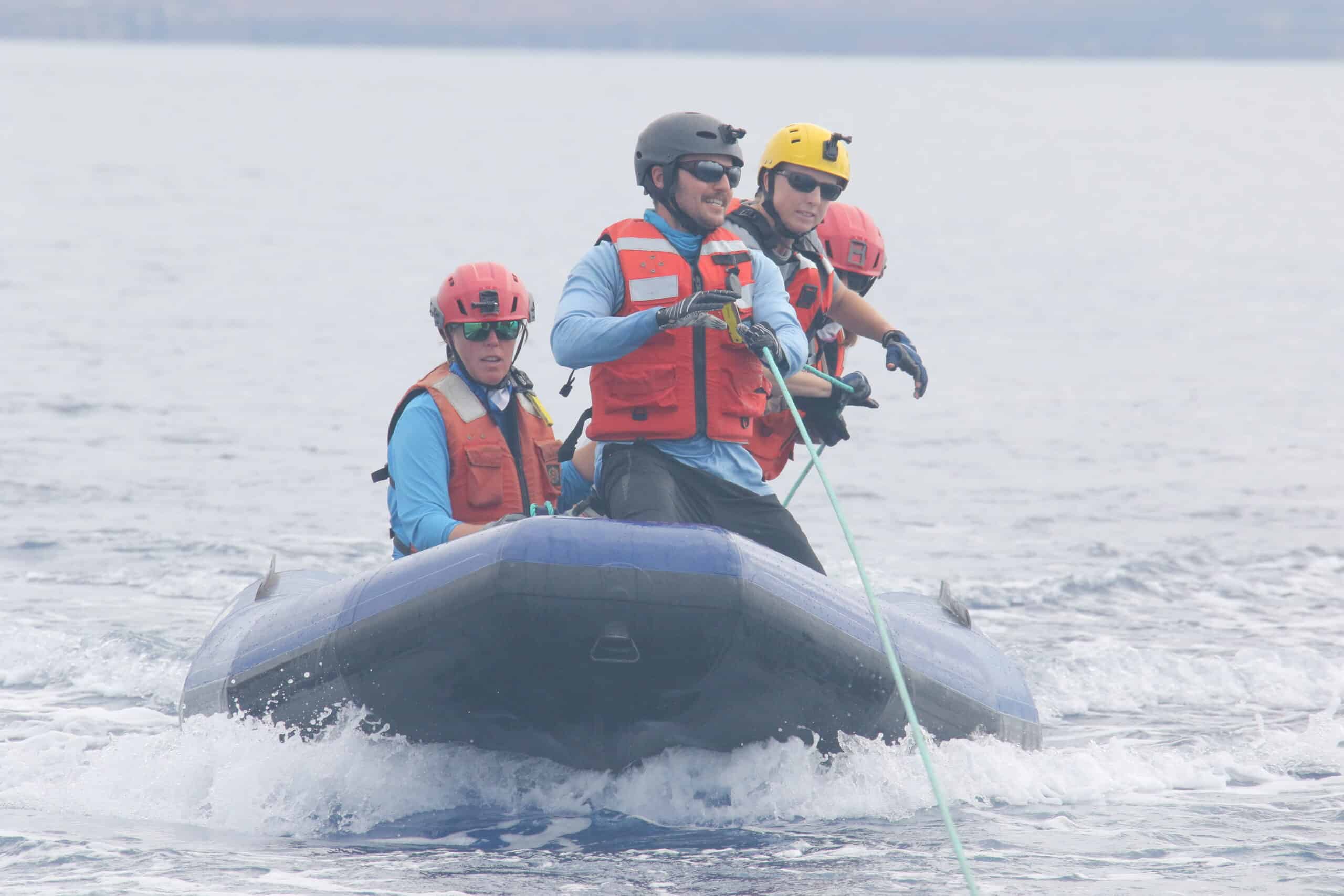
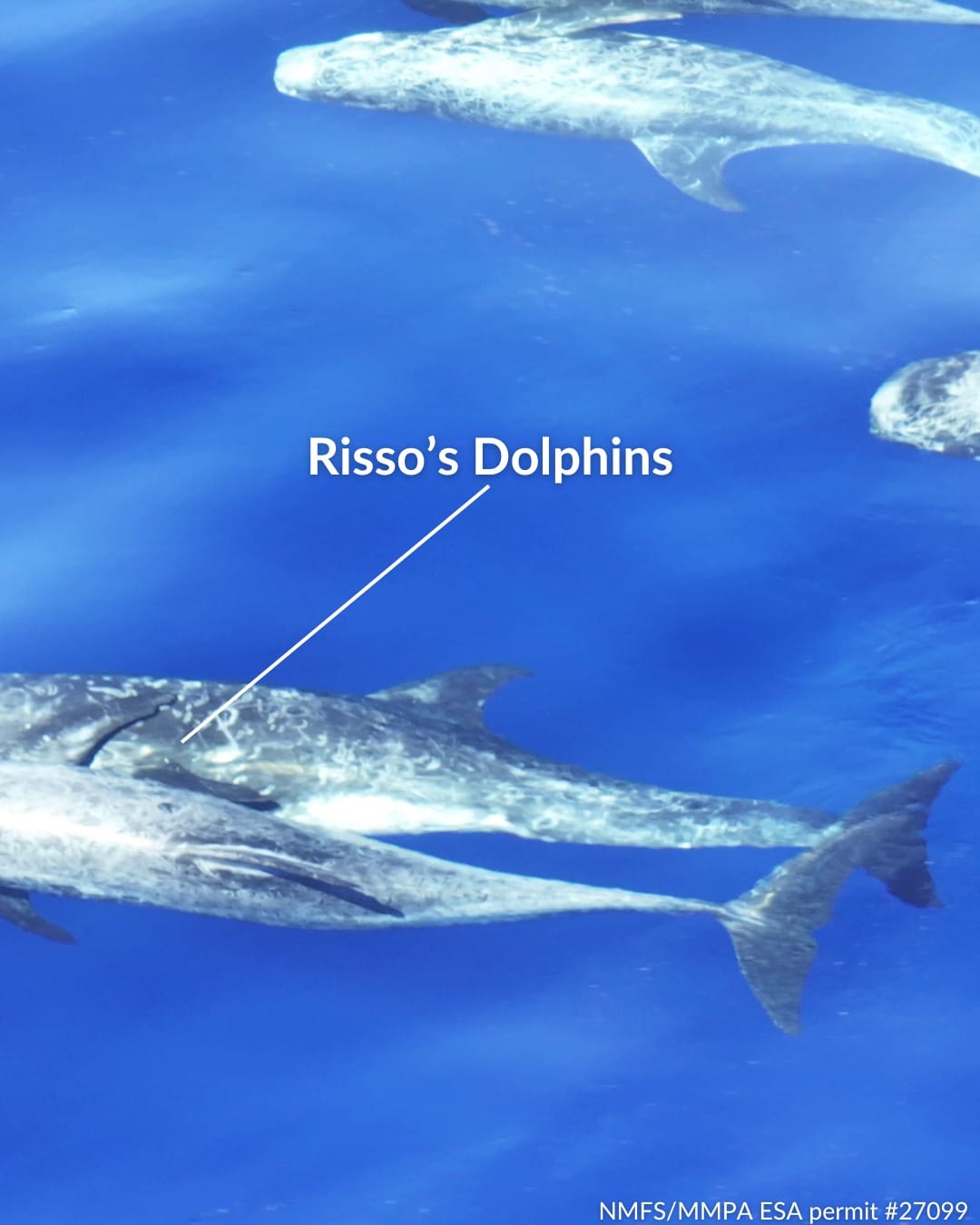
Pacific Whale Foundation First Sighting of Risso’s Dolphins Off the Coast of Lānaʻi
October 30, 2024
Thanks to near-ideal weather conditions, our Research team got out on the water on all 10 planned survey days in our 4th year with the Marine Mammal Research Program University of Hawaii in the deeper waters off Lānaʻi’s leeward coast!
The team gathered photo identification (for long-term population monitoring) and body condition (via drone, to assess health and age class) for a variety of species, including spinner dolphins, common bottlenose dolphins, pantropical spotted dolphins, and short-finned pilot whales.
We were also fortunate to observe some less common species such as false killer whales, melon-headed whales, Fraser’s dolphins, and Risso’s dolphins! In fact, this was our team’s first sighting and only record of Risso’s dolphins off Lānaʻi.
Research activities authorized under NMFS/MMPA ESA permit # 27099. The UAS pilot holds FAA Part 107 authorization.
Pacific Whale Foundation Documents Nala, Iconic Hervey Bay Whale, During Recent Research Encounter
August 20, 2024
Recently, our research team in Australia (Pacific Whale Foundation Australia) were treated to an encounter with one of Hervey Bay’s most famous whales; Nala. Our researchers were notified by a whale watch vessel and the team launched a rapid response to document Nala’s presence and measure her size to determine her body condition and health!
Nala is well known in Hervey Bay as she has been a frequent visitor to this important migratory stopover site since the late 80’s during which she has been documented with at least 14 calves! The team observed Nala resting and socializing with another whale at the southern end of the bay. Both individuals briefly demonstrated some surface-active behaviors including breaching, pec slapping and head lunging, before returning to resting at the surface.
Research activities conducted under research permits and following animal ethics approval. The drone operator holds a remote pilot license (RePL) certified by the Civil Aviation Safety Authority.
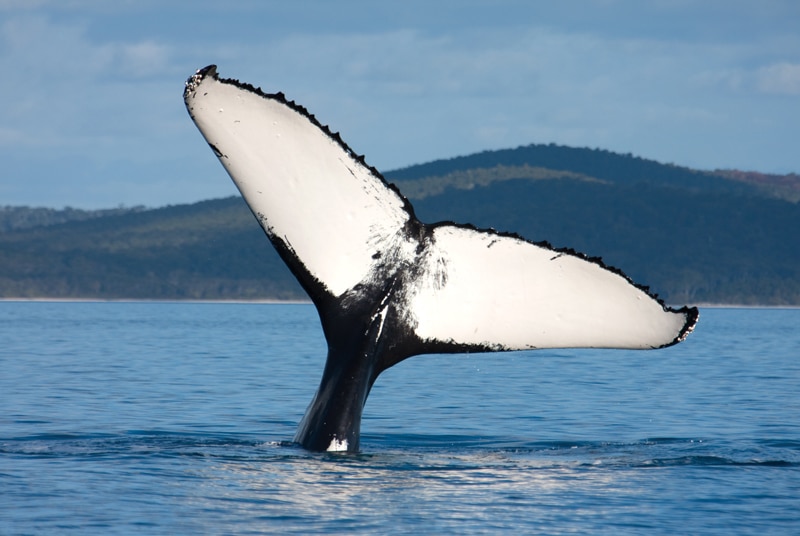
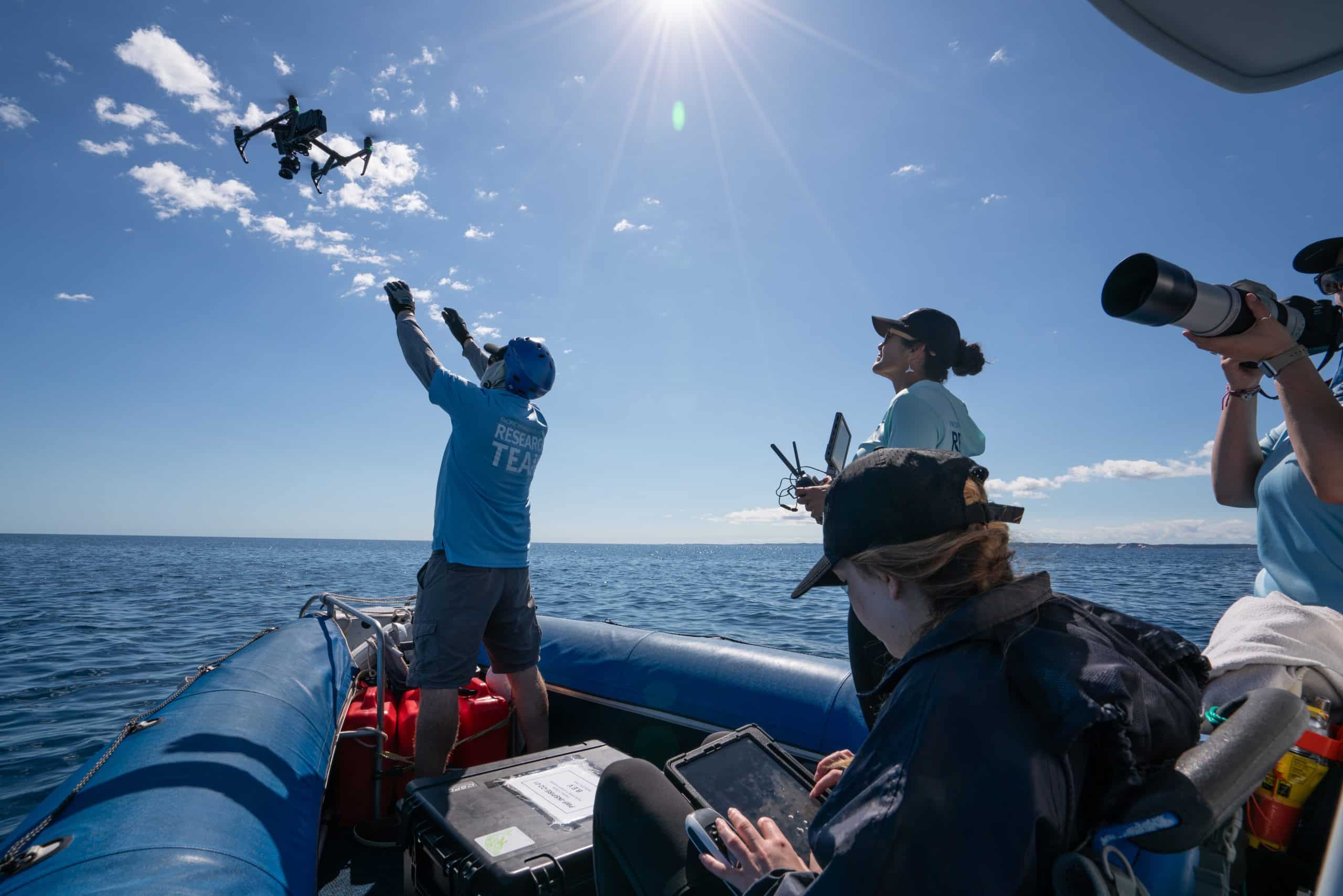
Pacific Whale Foundation Celebrates 40 Years in Australia
July 30, 2024
Join us in celebrating 40 years of dedication and passion for these magnificent creatures in Australia!
Our journey there began in 1984 when Pacific Whale Foundation founder, Greg Kaufman, visited Hervey Bay for a documentary film project. During his visit, Greg realized Hervey Bay is a crucial resting area for humpback whale mothers and calves on their migration back to feeding grounds in Antarctica. This discovery sparked PWF’s mission to learn more about humpback whales in Hervey Bay. Research efforts involved photo-identification of whale flukes as well as recording their songs using hydrophones. This research led to some of the first comparisons between humpback whale song in Hawaiʻi and Australia (Hervey Bay) to explore regional variations and understand the global significance of whale songs. These efforts improved our understanding of migration patterns, how whale populations are connected, and how cultural transmission occurs among them. Since then, we’ve been committed to understanding and protecting humpback whales in the Bay. Our efforts focus on addressing current threats, including fisheries interactions, vessel traffic, ocean pollution, tourism pressure, and climate change.
Study Finds Drones More Effective than Vessels for Assessing Skin Parasite Burden in Humpback Whales
July 24, 2024
Recently, Isabel Taylor, from the University of the Sunshine Coast (and now a naturalist on board Ocean Defender!), used our data to assess the potential of using drones to evaluate the skin parasite burden on humpback whales.
Using specialized software, Isabel compared images of the same whale taken with traditional vessel-based methods to those taken by drones. While vessel-based photography is commonly used in whale research, drones have recently become a very popular research tool that allows more data to be collected with minimal impact on the whales.
Through pixel-based analyses, Isabel found both methods to be comparable at estimating parasite coverage, however, drones produced many more suitable images for assessment than the vessel-based method, making them an overall more effective tool for assessing parasite coverage! These results highlight the value of drones in cetacean research and going forward we aim to continue using this method to assess parasite burden in humpback whales.
Research activities conducted under research permits and following animal ethics approval. The drone operator holds a remote pilot license (RePL) certified by the Civil Aviation Safety Authority.


Over 100 Attendees at Annual Ecuador Whale Watching Training
July 18, 2024
117 people attended our annual training for whale watching captains and tour guides hosted by our Ecuador Research team in Puerto Lopez! The training covered a range of topics, including:
– the latest whale and dolphin-watching regulations
– the diversity of cetaceans along the Ecuadorian coast
– updates from our ongoing research efforts in the region with an emphasis on the threats of unsustainable tourism
At the end of the sessions, we distributed 20 eco-friendly bags with messages to avoid marine litter, reinforcing our commitment to preventing marine plastic pollution. Each year, our commitment extends to educating the local community about whale interaction rules and sustainable practices. We are delighted to deepen our engagement with the community and eagerly anticipate further opportunities to strengthen these bonds!
Research activities conducted under permits from Machalilla National Park. (Actividades de investigación realizadas bajo los permisos del Parque Nacional Machalilla.) Research activities conducted under appropriate state and federal permits and following animal ethics approval.
New Study Highlights Critical Need for Monitoring Small Population of Pantropical Spotted Dolphins in Maui Nui
July 16, 2024
Pacific Whale Foundation is pleased to announce our recent publication ‘Pantropical spotted dolphin (Stenella attenuata attenuata) abundance estimates in Maui Nui, Hawaiʻi reveal small population in need of monitoring’ published in Frontiers in Mammal Science. Recent minimum population estimates are critical for effective marine mammal conservation, yet such estimates are often lacking at the stock or management level. Throughout the Main Hawaiian Islands, island-associated stocks of pantropical spotted dolphins (PSD) face multiple anthropogenic and natural threats including:
– vessel impacts
– fisheries interactions
– marine debris
– climate change
– disease
Prior to this study, no abundance estimates of the 4-Islands (i.e., the Maui Nui region) PSD stock existed that were suitable for management use. This publication features Pacific Whale Foundation’s use of long-term dolphin photo-ID data to generate abundance estimates of PSD in Maui Nui. Our benchmark results revealed a small population in need of monitoring given the numerous threats facing this stock, the uncertainty of their impacts, and the decreased resiliency and recovery potential of small populations to negative demographic and environmental stochastic events. Our findings, including documenting long-term site fidelity and year-round presence of PSD in Maui Nui, further signify this area as one of future research and conservation importance.


Australian Team Completes 24 Days of Dolphin Surveys in Hervey Bay, Revealing Key Insights into Species Distribution and Habitat Use
July 12, 2024
The Australian research team have been conducting line transect surveys in Hervey Bay since August 2022! These surveys help to better understand the abundance, distribution and habitat-use of the dolphins in the bay
To date, the team has completed 24 days in the field, covering nearly 4,300 kilometers! The most common species recorded was the Indo-Pacific bottlenose dolphin; the team encountered 163 different groups. They also encountered 20 Australian humpback dolphin groups and 17 common bottlenose dolphin groups. The outcomes of this project will help inform management decisions regarding all three dolphin species in Hervey Bay and help to assess the threats they may face in this area!
Research activities conducted under research permits and following animal ethics approval.
Oʻahu Diver’s Surprise Encounter with Out-of-Season Humpback Whale Highlights Need for Ongoing Research
July 9, 2024
Over the weekend an Oʻahu diver was in for a surprise when he encountered a humpback whale!
KHON2 News reported on the out-of-season encounter between diver known as Oʻahu Ryan and the humpback whale. Typical months for humpback whales sightings in Hawaiʻi occur between November through May.
It appears that this whale has mistimed some part of its migration, either here in Hawaii or Alaska. While we cannot determine the exact reason for its presence, it highlights the importance of ongoing research. As ocean conditions continue to change due to climate change, we anticipate seeing more of these unusual sightings in the future. Understanding these patterns is important for the conservation and protection of humpback whales and their habitats.

Whale Season Approaches in Hervey Bay: First Whales Spotted as Teams Prepare for Fieldwork and Whale Watches!
June 13, 2024
Whale season in Hervey Bay is right around the corner and the first whales of the season have been spotted! 🐋
Our Research team down in Australia is hard and work prepping for the upcoming season of fieldwork and our Eco-Adventure team is prepping for whale watches. Do you have travel plans for the next few months? Consider heading down under!
Interesting/Unusual Sightings
One of Hervey Bay’s Most Famous Whales
July 2024
The Australia research team were treated to an encounter with one of Hervey Bay’s most famous whales; Nala. The whale watch fleet notified our researchers and the team launched a rapid response to document Nala’s presence and measure her size to determine her body condition and health.
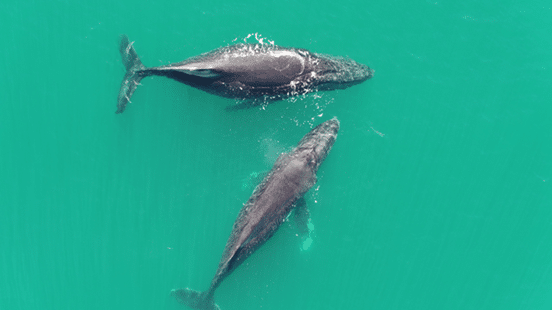
Nala has been a frequent visitor to this important migratory stopover site since the late 80’s during which time she has been documented with at least 14 calves. The ability to track the life history of a single female over 40 years highlights the importance of PWF’s long-term monitoring efforts happening throughout the Pacific. The team observed Nala resting and socializing with another whale at the southern end of the bay.
Unusual Double-Dorsal Fin Sightings Across Three Regions
2024
Our research teams have had a trio of unusual sightings this year; three humpback whales, with two dorsal fins each! One was sighted in Ecuador in August, where local guides who have affectionately named it the “dragon whale”, called our research team so they could come gather data. The other is a calf, who was sighted with its mother by one of our research staff in Hawai‘i in March. A week after the Ecuador sighting, our Australia team sighted a “dragon” of their own in Hervey Bay! All whales seemed energetic and in good health. This double dorsal fin is unusual, but not rare, and has been documented in both calves and adults, and can be a genetic anomaly or the result of an injury. We believe the Hawai‘i and Ecuador occurrences are genetic, however, if you look closely at the Australia sighting, you can see that the spacing between the dorsal fins is much smaller than the other two – so this might be a healed injury rather than something it was born with – we aren’t sure!
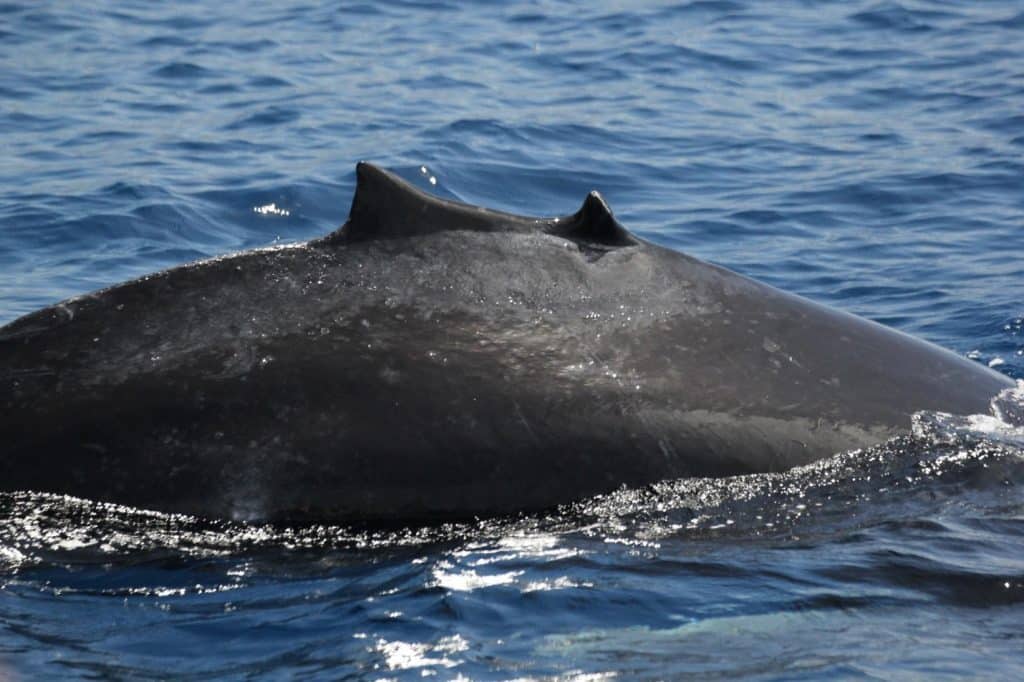
Hawaii
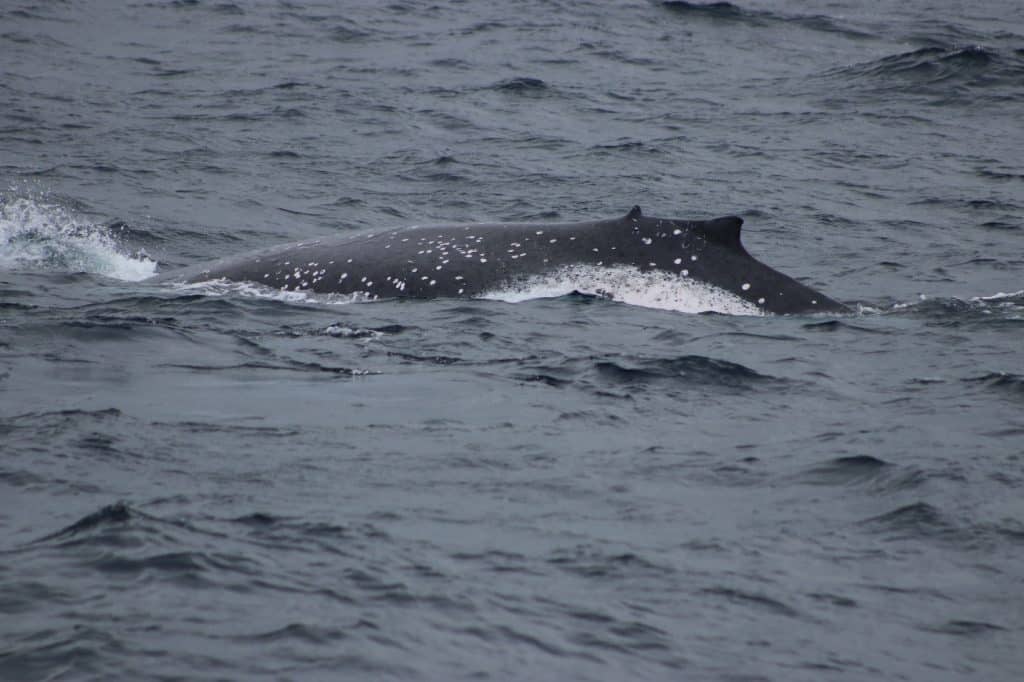
Ecuador
